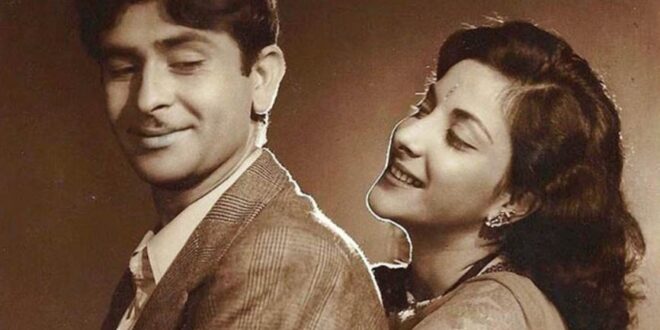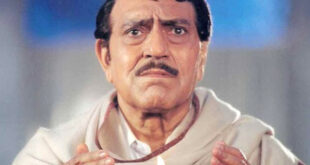Table of Contents
Biography
Ranbir Raj Kapoor is a legendary Indian actor and director of the 20th century. The role that Kapoor played in cinema will better help to reveal the popular titles of the artist. Film critics and fans alike called Raj the “Indian Charlie Chaplin ” and “the king of Indian cinema.”
Childhood and youth
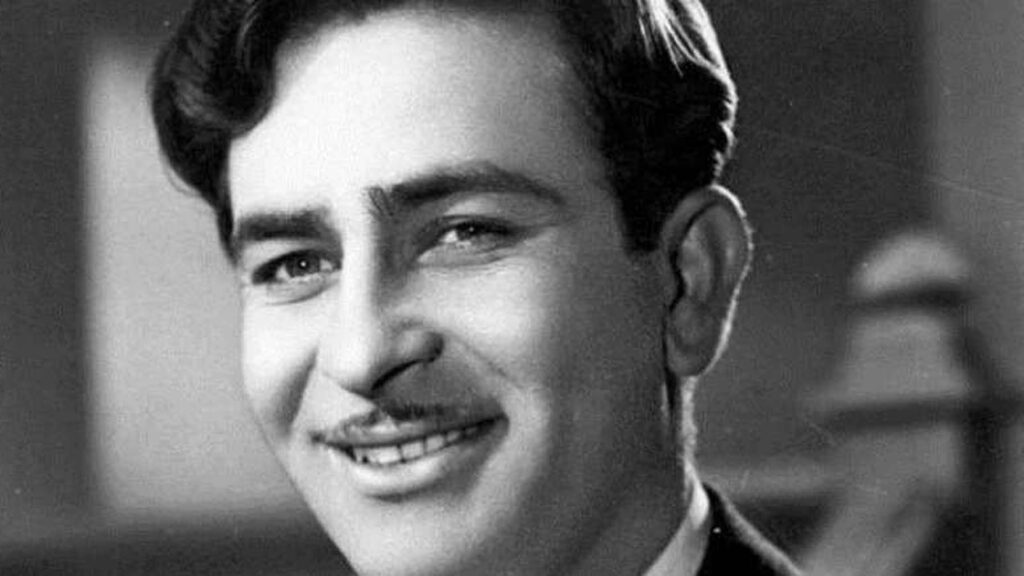
Raj Kapoor was born on December 14, 1924, in Peshawar, which was then a British colony (today it is a province of Pakistan). The artist is an Indian by nationality. The fate of the actor was destined for Raju on the fact of birth – the father of the future star turned out to be producer and director Prithviraja Kapoor, who owned his own theater “Prithvi Theater”. Devan Basheswartat Kapoor’s grandfather was also an actor.
Together with the Raj brothers, he often spent time at work with his father and learned early the secrets of the theatrical backstage. At the age of six, the boy already performed on stage and helped theater workers – lighting, artists, cleaners. The guy’s parent did not interfere with such activity of the children and in every possible way approved of it.
Already at the age of fourteen, the young man had an enviable experience as a professional actor, standing out among others with his expression, temperament, and talent as an improviser.
Career
However, Raj’s dreams were not connected at all with the world of Melpomene, the talented young man was attracted by the amazing magic of cinema. For the first time, Raj starred at the age of 11 in the film “Revolution”.
Kapoor started his career as an assistant director at the Bombay Talkies film studio, refusing to enter a higher education institution. Here, on his own experience, the young man mastered the main cinematographic specialties, at the same time comprehending the technical capabilities of the cinematography of the West, which far outstripped colonial India.

The turning point in the film career of Raj Kapoor was 1947, the year of India’s independence. Having starred in several films, the novice actor invested the entire fee in his directorial debut – the film “Fire”, where he was simultaneously the leading actor.
Subsequently, it becomes the artist’s signature style. As a rule, Raj plays the main characters in his own films. Already in the first try of the director’s pen, theatrical techniques are replaced by many characteristic cinematic finds: black and white filming with an emphasis on the contrast of light and shadow, autobiographical details, the philosophy of nature of true human beauty, the search for the artist’s true mission.
With this fateful picture, the era of a creative union with the charming actress Nargis began, who became the actor’s permanent partner in sixteen films.
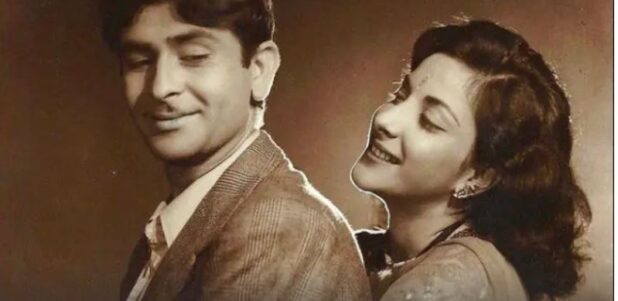
n 1948, Kapoor made another landmark step in his career – he founded the film company “RK Films”. At the age of 26, the artist became the youngest Indian director at that time.
At first, Kapoor and the team had to work on pure enthusiasm due to lack of funds. But soon, thanks in large part to the talent of its creator, “RK Films” became one of the most profitable film industries in India. The amazing gift of the director’s foresight allowed him to find topics for projects that excited and found a sincere response in the soul of the audience.
Kapoor’s early films are poetic and romantic, projects come from the heart, while at the same time touching upon pressing social issues – the problems of poverty and caste stratification in India.
A truly tremendous success was brought to the artist by the picture “The Tramp”, released in screens in 1951. For several decades, the film was included in the top box office ratings in the world.
In this cult film, Raj Kapoor first appeared before the audience in the form of a cheerful tramp, which was developed in the comedy “Mr. 420”. Songs from these paintings are recognized as classics of romantic compositions of the Indian dream factory.
In 1964, the audience saw the first color film “Sangam”, which became the last work of the actor as the main performer.
Later
Later, Kapoor focused on directing and producing jobs, rarely appearing on the movie screen. In total, the filmography of the great actor includes more than 80 films.
In 1970, the director shot the picture “My Name is Clown”, consisting of three episodes. Soviet ballerina Ksenia Ryabinkina played in the tape. The girl appeared in the form of a circus performer Marina, who met in India with the hero Raj – a clown. The artists fell in love with each other. But then the tour ended, and the girl returned to her homeland. The lovers did not meet again soon.
Kapoor had high hopes for this project. The common work of India and the Union was important to the creator. The man regularly traveled to the USSR. But in the end, the film was not a success in the Soviet Union, and in India, the film failed at the box office. The audience was waiting for songs, dances, and romance.
Only after the death of the director, critics praised this film.
Personal life
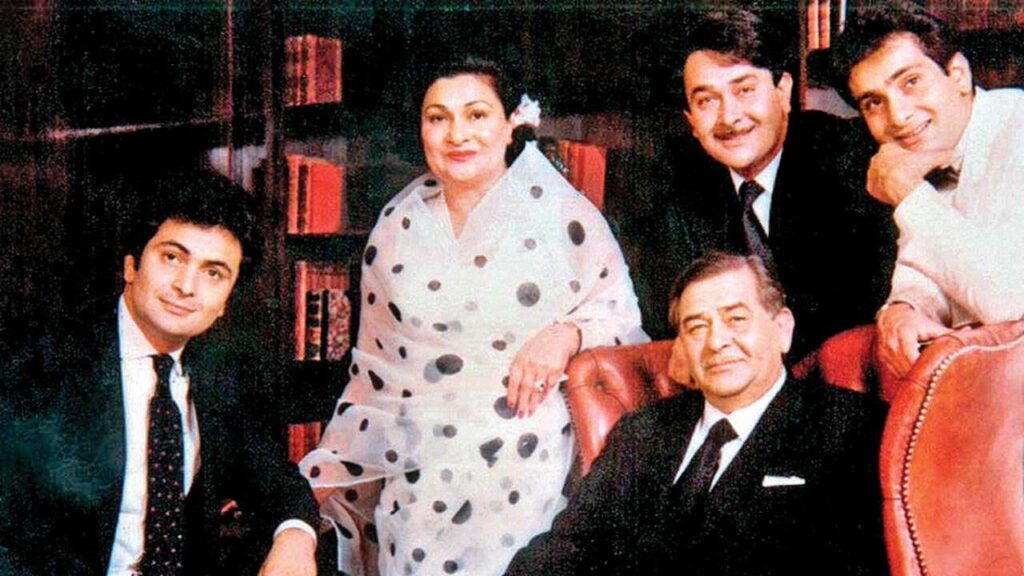
Raj Kapoor had only one wife – Krishna Kapoor. The young people got married in 1940. Krishna is the cousin of Raj’s father. At the time of her marriage, the girl was 16 years old. This marriage was arranged. Once dad came up to the young man and said: “You are getting married.” To this Kapoor replied, “Yes, father.”
Kapoor’s wife became the mother of five children – two girls (Rima and Rita) and three boys (Rajiv, Randhir, and Rishi). The man became the successor and founder of the glorious film dynasty – the artist’s sons and brothers became actors. The Kapoor family is still considered one of the most influential clans in Bollywood today. Raj and Krishna lived together for 48 years, until the death of the director.
The family has a long tradition – the women of the dynasty cannot become actresses. This rule was violated by the granddaughters of Raja – Karina and Karishma Kapoor. The girls’ mother divorced her husband and thus gave her daughters the opportunity to make their dreams of acting come true.
Raj’s relationship with his devoted partner Nargis began on the set of the film “Rainy Season”, but despite a long creative union, the couple’s feelings did not continue. At that time, Raj Kapoor was already married and did not want to end the relationship.
Nargis hoped for reciprocity for ten years but then continued her career with another director. This cinematic union broke up in 1957.
According to another version, Nargis argued that the woman’s relationship with the director is only creative. But rumors about the novel reached the director’s wife. Then Krishna demanded from the husband to stop contact with his partner. Raj and Nargis obeyed. The girl began to appear in other directors, then she got married and left the cinema altogether.
Another story from the biography of the great artist happened in Bombay. Then Kapoor needed to shoot a crowd scene on the main street. In reality, this meant that the authorities would have to shut it down for an hour. And they agreed because Raj Kapoor himself requested. But with one condition: the director was not supposed to appear in public, otherwise, the fans would have demolished everything on the way to the idol.
The Soviet cosmonaut Yuri Gagarin had a personal acquaintance with Raj . The men met in November 1961 when Gagarin was visiting India. On this occasion, celebrities took a photo for memory. On a personal acquaintance, Yuri Alekseevich called the Indian “Comrade Tramp”. Then Yuri was the visiting card of the USSR, and Raj was the “visiting card” of India.
Death
As a true artist, Raj Kapoor died without stopping to create. During a ceremony in New Delhi, at which the President of India was honored as the best national cinematographer of the actor, Kapoor suddenly passed out. The actor was immediately hospitalized, a month later he died at the age of 63. The cause of death was complications from asthma.
The departure of the Raj was perceived at home as a national tragedy. On this day, the country declared mourning. With the death of Kapoor, an entire era of Indian cinema has come to an end.
They say that before his death, the great artist revised the chronicle of his visits to Moscow. At that time, films from India were played in every cinema.
The producer of the Raj Kapoor Films company assures that the studio still loves Russia and Russian audiences. In 2014, an evening in memory of Raj Kapoor took place in the capital of Russia. At the event, Rahul Srivastava, Cultural and Information Advisor at the Indian Embassy in Russia, said that in his next life,
 World Magazine 2024
World Magazine 2024
